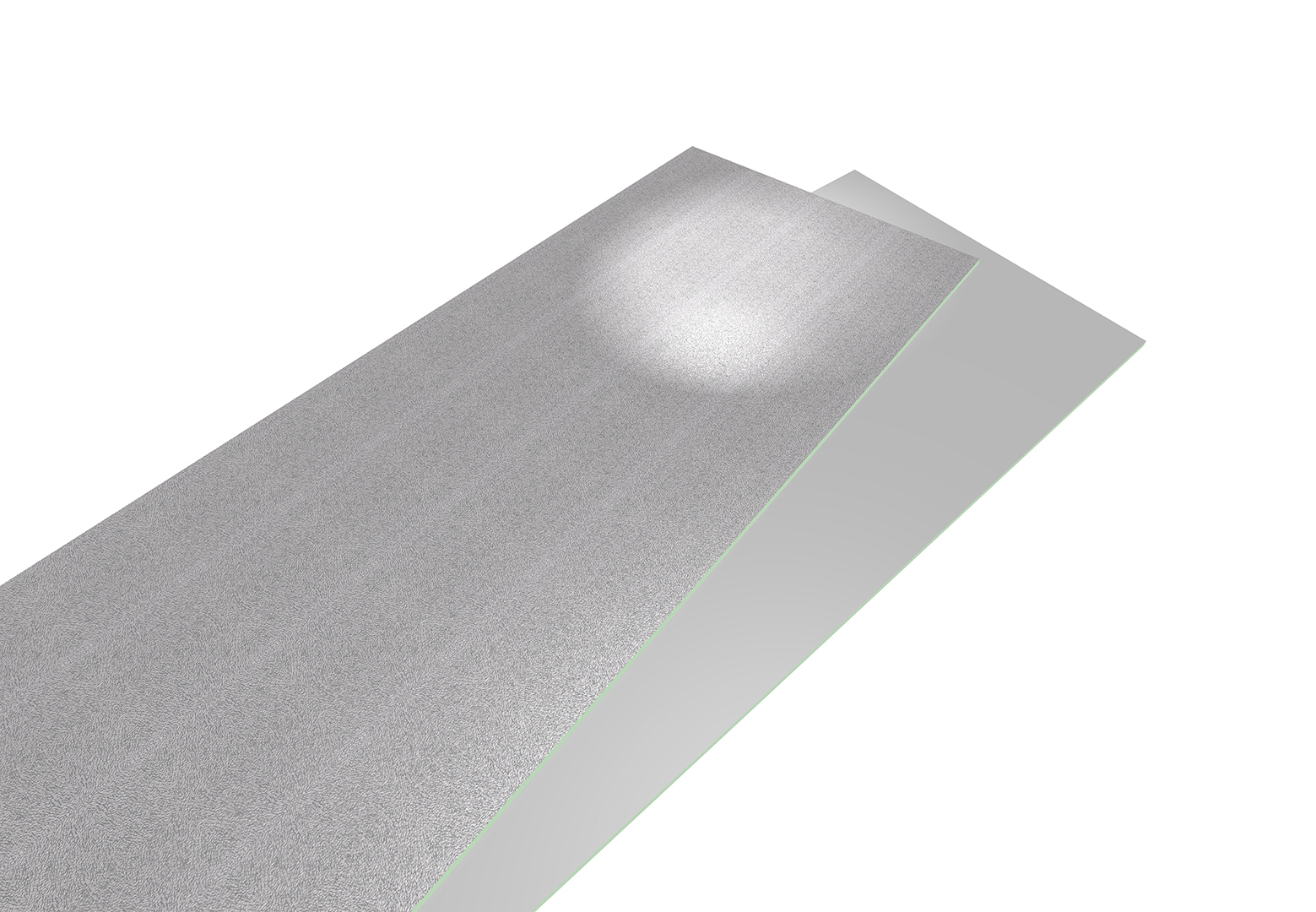SPECIFICALLY DESIGNED FOR APPLICATIONS OF VENTILATION DUCTS OF CLEAN ROOMS AND HOSPITAL ENVIRONMENTS
Product Description
Is a high performance insulation board manufactured from CFC or HCFC free closed cell rigid polyisocynurate PIR foam.
It’s covered on one side with an 80 µm embossed aluminum foil and on the other side with an 80 µm smooth aluminum foil lacquered by an anti microbic material.
Suggested in applications of very clean environments (hospitals, laboratories, clean rooms).
Dimensions: width and length 1200 x 4000 mm
Thickness: 20,5 mm and 30,5 mm
Density of the foam: 45 ± 3.0 kg/m3
Main application: for the construction of pre-insulated aluminum ducts for air distribution
Main characteristics and performance:
-
Insulating material density: ρ [kg/m3 ] EN 1602 – average value 45 ± 3.0
-
Average thermal conductivity: λ9090,I [W/mK] EN 13165 Annex A and C Value determined 10° C; 0.021
-
Resistance against pressure: EN 13403. The duct resists at the maximum pressure of 3750 Pa
-
Air leakage classification EN 13403, EN 1507. Globe duct constructed using bayonet profiles is in B class
-
European fire reaction: Globe duct EN 13501-1, EN 11925-2, EN 13823 B s2 d0
-
British fire reaction class: Globe board BS476: part 6:1989, 0 Class, BS476: part 7:1997, 1 Class, BS476: part 6/7, 0 Class
-
Rigidity class: EN 13403, 300.000 (R5)
-
Antimicrobial activity ISO 22196 > 99%, available test report on request
-
Acoustic experimental values – dB EN ISO 7235; Insertion loss in octave band

-
Blowing agent UNI EN 15804 OPD (ozone depletion potential) = 0 and GWP (global warming potential) does not include in CML; IA:2016
-
Tolerance [mm:] EN 13165; width and lenght: ± 7,5 for 1200 mm; ± 10 for 4000 mm; thickness ± 0.7 mm
-
Stability to the temperature: Globe panels are used in a range of continuous temperatures normally included between -40° C and +110° C. Long exposures to the temperatures could cause deformations to the foam or to the coats, but without causing sublimation or fusion.
-
Aspect: prolonged exposure of the polyurethane foam to UV rays can cause surface oxidation, the phenomenon does not affect the basic characteristics and performance of the panel.

 WhatsApp Us
WhatsApp Us